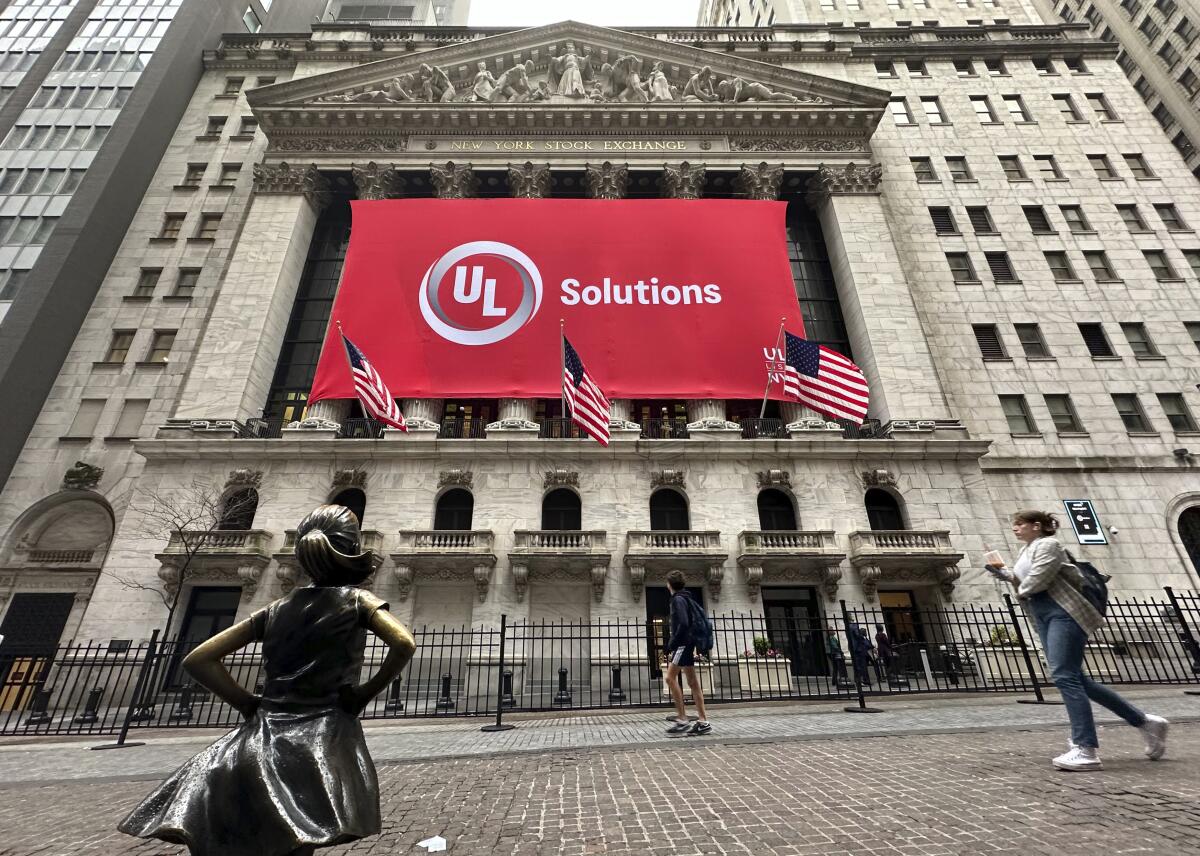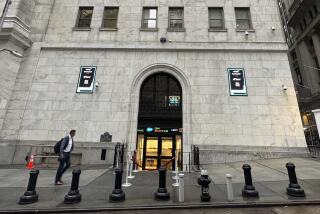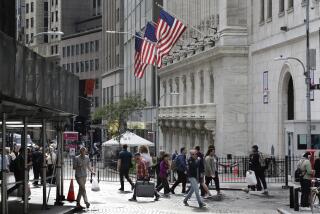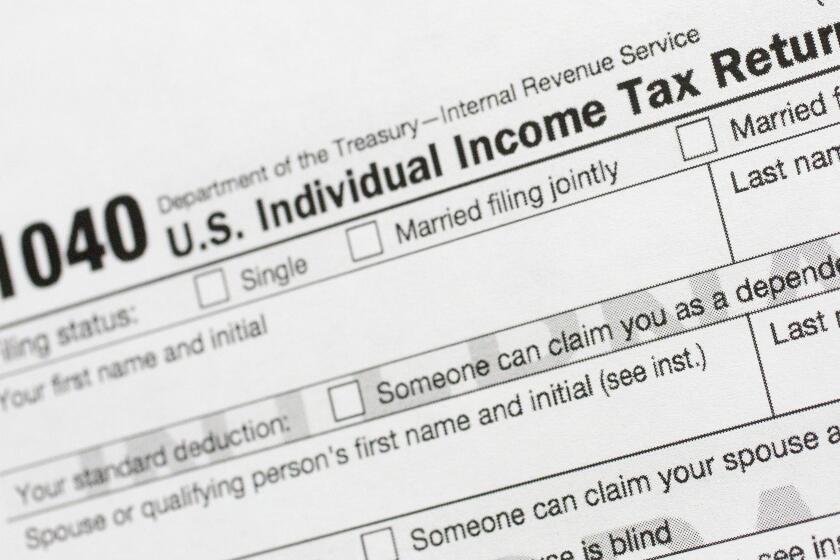Wall Street falls sharply to close out its worst week since October

NEW YORK — U.S. stocks tumbled Friday after a mixed start to earnings reporting season. Worries about potentially escalating tensions in the Middle East rattled financial markets, pushing investors to look for safer places for their money.
The Standard & Poor’s 500 sank 1.5% to close out its worst week since October, when a huge rally on Wall Street began. The Dow Jones industrial average dropped 1.2%, and the Nasdaq composite fell 1.6% from its record set the day before.
JPMorgan Chase was one of the heaviest weights on the market. It sank 6.5% despite reporting stronger profit for the first three months of the year than analysts expected. The nation’s largest bank gave a forecast for a key source of income this year that fell below Wall Street’s estimate, calling for only modest growth.
The pressure is always on companies to produce fatter profits. But it’s particularly acute now given worries that the other main lever that sets stock prices, interest rates, may not offer much lift in the near term.
A stream of reports this year has shown both inflation and the overall economy remain hotter than expected. That’s forced traders to scale back forecasts for how many times the Federal Reserve will cut its main interest rate this year. Traders are largely betting on just two cuts, according to data from CME Group, down from forecasts for at least six at the start of the year.
U.S. stock indexes had already run to records in part on expectations for such cuts. Without easier interest rates, companies will need to produce bigger profits to justify their stock prices, which critics say look too expensive by various measures.
This year’s jump in oil prices has further raised worries of more upward pressure on inflation. Oil rose again Friday as tensions continue to roil the Middle East. Israel has said it could strike Iran if it launched an attack from its territory after the killings of Iranian generals in a blast at the Iranian consulate in Syria.
Brent crude, the international standard, rose 0.8% to $90.45 a barrel. It briefly topped $92 during the day and is roughly back to where it was in October.
At the same time, Treasury yields in the bond market sank and the price of gold rose, which is typical when investors are herding into investments seen as safer.
The yield on the 10-year Treasury fell to 4.51% from 4.58% late Thursday. Gold, which has been setting records, got close to $2,450 an ounce for the first time before paring its gain.
Adding to the nervousness was a preliminary report suggesting sentiment among U.S. consumers is sinking. It’s an important update because spending by U.S. consumers is the main engine of the economy.
Perhaps more worrisome was that U.S. consumers may be getting more pessimistic about inflation. Their forecasts for inflation in the coming 12 months hit the highest level since December. Such expectations could ignite a self-fulfilling prophecy, in which purchases meant to get ahead of higher prices only inflame inflation.
That’s why so much scrutiny is on corporate profits. Although the downside of a remarkably resilient U.S. economy is a diminished chance of rate cuts, the upside is that it should help prop up sales and earnings for businesses.
That’s helped growth in profits to broaden out to more companies, rather than just the Big Tech behemoths that dominated the market last year, said David Lefkowitz, head of U.S. equities at UBS Global Wealth Management.
Because of that, he’s forecasting the S&P 500 could end the year around 5,200, which is roughly where it closed Thursday. He says the index could even rise to 5,500 if inflation pressures ease more quickly or corporate profit growth is stronger than expected.
On Wall Street, Wells Fargo slipped 0.4% after swinging between gains and losses through the day. It beat analysts’ forecasts for overall earnings for the latest quarter. But its net interest income, a key component of bank profits, came up shy of forecasts.
Citigroup fell 1.7% despite also reporting stronger-than-expected results, while State Street rose 2.5%.
All told, the S&P 500 fell 75.65 points to 5,123.41. The Dow dropped 475.84 points to 37,983.24, and the Nasdaq composite sank 267.10 points to 16,175.09.
Banks are leading off a reporting season for which analysts are forecasting companies in the S&P 500 will deliver a third straight quarter of growth, according to FactSet. This upcoming week will feature reports from such big names as Bank of America, Johnson & Johnson and UnitedHealth Group.
Federal Reserve Chair Jerome H. Powell will be speaking at a closely watched Q&A event Tuesday with a governor from the Bank of Canada. Other Fed officials will also be giving remarks through the week that could sway traders’ expectations for upcoming moves on interest rates and trigger Wall Street’s next swings.
Choe writes for the Associated Press. AP writers Matt Ott and Zimo Zhong contributed to this report.
More to Read
Inside the business of entertainment
The Wide Shot brings you news, analysis and insights on everything from streaming wars to production — and what it all means for the future.
You may occasionally receive promotional content from the Los Angeles Times.










